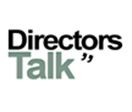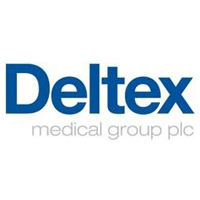Deltex Medical Group Chief Executive Officer Ewan Philips and Chief Financial Officer Paul Mitchell caught up with DirectorsTalk for an exclusive interview to discuss product overview, their business in the US and future opportunities.
Q1: You’ve had your update today, could you just give us an overview, in layman terms, of your products and your services in terms of the hospital procedures that they are involved in?
A1: Our core technology is something called oesophageal Doppler monitoring which is a long difficult word! What it is is that we put a probe down the oesophagus pointed at the red blood cells travelling around the body, as they’re being pumped out of the heart, and measure the speed at which theyre going around the body. In terms of why you would do that, a typical adult has about 5 litres of blood in the body and a typical adult’s resting cardiac output is 5 litres per minute so each of those 5 litres is going once round the body and through the heart/lung system every 60 seconds. The primary purpose of that is to deliver oxygen to the tissues. If you imagine that slowing down, the velocity measurements are important, to once every 70/80/90/100 seconds, you don’t deliver the same amount of oxygen to the tissues and the tissues start to suffer. Two main applications, one is in intensive care where patients are very ill, and the other one is in surgery where people are having a major anaesthetic. Both being lots of critical illnesses and a big anaesthetic tend to cause the blood to slow down. That’s relative to heart rate, and it’s because the body is not properly filled, and what you do is add fluids and drugs and you’re trying to just keep the blood cells moving to keep the oxygen going to the tissues. If you do that, the tissues stay healthy, you avoid complications; in after-surgery it’ about half of complications avoided which means patients do much better in the short term, lower costs to hospitals and it also means patients do much better in the long term. If you have a major complication or a complication after a big operation, it knocks at least 7 years off your life on average. So big things nobody wants that, avoiding them is a very very good thing and we enable people to do that with a unique way that works , is proven and is very much the future.
Q2: So you’re a key part of the medical and the healthcare process, right across the board basically?
A2: Very much so. We’re are part of one of the top three things in a modern approach to surgery known as enhanced recovery which has grown out of Europe, spreading across Europe, it’s now going into the States well and going in to the rest of the world, it’s basically best practice.
Q3: Speaking of the States, your US surgical sales have increased by 20% before currency factors. How is the business going there? Obviously, it sounds like it going very well but on what basis is it growing?
A3: Business is growing strongly. We are expanding rapidly, we started last year and by the middle of last year, we had 3 sales territories established which is basically 3 cities and the surrounding areas. Between those, they grew at 36% last year then the other bits actually dragged that down a bit towards 20% as we started to wrap up. Very good profile though, once you get in and get going, you start to grow stronger.
Q4: So is it true to say that you’ve got your footprint firmly in the US market and that should obviously be as encouraging as it sounds in terms of a UK company?
A4: We’re not trying to tackle the whole of the US market in one bite. What we’re trying to do is to get into 7 cities rather than 3, by the end of this year we hope to be in 10 and within that we’re trying to get to a stage in the middle of next year where we’ve got 30 or more accounts who are on a proper program to implement this deeply across the hospital. We’ve got 7 who are absolutely on our gold standard program on that, we’ve got another 5 who are very close to that and we’re already working with them and they’re growing nicely. We’ve got the plans in place to get all the evaluations done for the next 8 or more in the first half of this year, we should have them up and running by the end of this year. By the second half, we’ll do the evaluations on the next 10 which gets us to 30 by the middle of 2016. So that’s going bang on plan, going very well and that will give us about 1% of the US hospital market but in the sort of places that influences the others and getting it ready to roll out in 2016, second half.
Q5: You’ve noted that in the UK, probably counter-intuitively, the adverse market conditions over the past year and this was despite a record monitor order from the NHS. Could you describe the market here and what you expect to happen?
A5: Going back 3 years ago, the NHS took, in our mind, a very rational decision to implement our technology fully at pace and scale because patients do better so they could save across the whole country about £1 billion a year so a good decision. The implementation has been very poor, that’s tied in with the NHS running out of money so that’s been a very difficult time and they’ve changed the way they do that implementation and it’s not been helpful so they killed a lot of the momentum. However, the clinical momentum behind this, because it’s the right thing to do for patients, continues to grow. It’s a question of getting through the NHS system-wise and that coming through which we think will happen in the second actually all part of this year. So it’s been a disappointment to us but all the negative things are very much behind us apart from the NHS being short of cash, we have got the right solution for them and we expect to grow quite strongly but we’re not betting the business on that happening so we’ve taken cost out to make sure we can invest in the more dynamic markets like in the States.
Q6: So it sounds as though, in fact ironically, the less money the NHS has, the more it needs your services or needs to implement your type of offering. Is that correct?
A6: It is but we don’t think they’ll focus on that until after the election when they work out which party is in and how much money they’re going to get.
Q7: Finally, your overview on the market opportunities that are coming up in the various geographies that you’re involved in. Also whether you’re going to expand your offering into other geographies over the near term and the final point, your new technology, how is that playing out?
A7: For the first part, the US is the key focus are but we’ve also got some really good programs going on in France which is still a bigger market for us than the States. We’ve got Spain coming together after years of investment in that although we’ve got to be cautious there because it’s still a bit of an economic basket-case. We’ve got some programs going on in Canada which are coming to a head this year that look exciting and we’ve got nice businesses going in places as diverse as Austria, Peru and Sweden where we are a market leader. So all those places we expect to carry on and the traction start to grow. The investment area is the States because outside the States we make money out of all our sales and marketing operations, we make quite a lot of money so the States is the key one. New products is exciting, we’re moving towards what we’re calling the ‘human enemy at work station’ so as this management of human dynamics starts to become another vital sign, we’ll be offering one platform with all the various proven technologies to help you do that in different circumstances and you flex that due to the patient’s risk, how sick they are but also the type of procedure that they’re having, either in surgery or in intensive care. So that’s an exciting thing, that’ll come together with some of the disposable revenue streams over the course of this year with the new platform in 2016.



